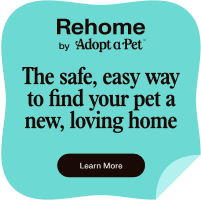Adopters with Children
Positive, loving relationships with pets help children become responsible, respectful, humane and caring adults. All children, even very well behaved and well supervised children, will eventually do something to the dog relentlessly, invasively, beyond the point of what is fair or tolerable. We want to make sure your child does not get bitten or hurt at that moment. We want your dog to be as happy with your family as your family is with your dog.
In our evaluation process, we look at the dog’s responses and thresholds to normal, everyday circumstances. We consider how tense he gets when approached, nudged, or petted while chewing on a pig’s ear or rawhide; how the dog tolerates having his body handled, being hugged, including for longer than he may want; how he copes with being restrained, and how he reacts when he is made to do something he doesn’t want to do or prevented from doing something he really wants to do. We test for his predatory excitement levels. We look at how roughly he plays, how sensitively he handles his body and whether he is gentle and respectful of his size and the size of others. We see how affectionate and sociable he is.
We handle and work with each dog and provide the most complete assessment we can before placing a dog in a home with young children. Please take the following suggestions seriously. They will help you keep your child safe.
Responsibilities for the Parents of the Newly Adopted Dog:
- Never leave a child alone with your new dog, not even for a second to turn your head and answer the phone.
- No one in the family should encourage rough play or wrestling. No one should let the dog play with his mouth on human body parts or clothes. If an adult plays with the dog in this manner, the dog may be stimulated to play as roughly with a child, putting the child at risk for injury.
- Feed your dog in an area completely protected and away from children, as much to give the dog a bit of peace and privacy as to prevent guarding behaviors. The dog should also be fed portions that are quickly finished so there is nothing left in the bowl for the dog to linger over and guard. Empty bowls should be put away so the dog can’t guard the feeding area.
- Most children are not bitten by their own dog but by a friend or neighbor’s dog.
- This means two things:
- Watch your own dog closely when your child has company. Many dogs will tolerate a lot from their own family’s child but not from a visiting child. Visiting children often do not behave as well as, or behave differently from, your child and could bother or provoke your dog.
- If your child’s friends have dogs, you need to meet the friend’s dog BEFORE you allow your child to visit their house. Check to see if the owner of this dog allows unsupervised interaction between children and the dog. Ask when and where the dog is fed and check to see if there are any chewable toys or bones lying around. Ask that they be put away while your child visits. Unless you are sure that their dog has no possessiveness problems, insist that an adult supervise at all times when children are with the dog.













